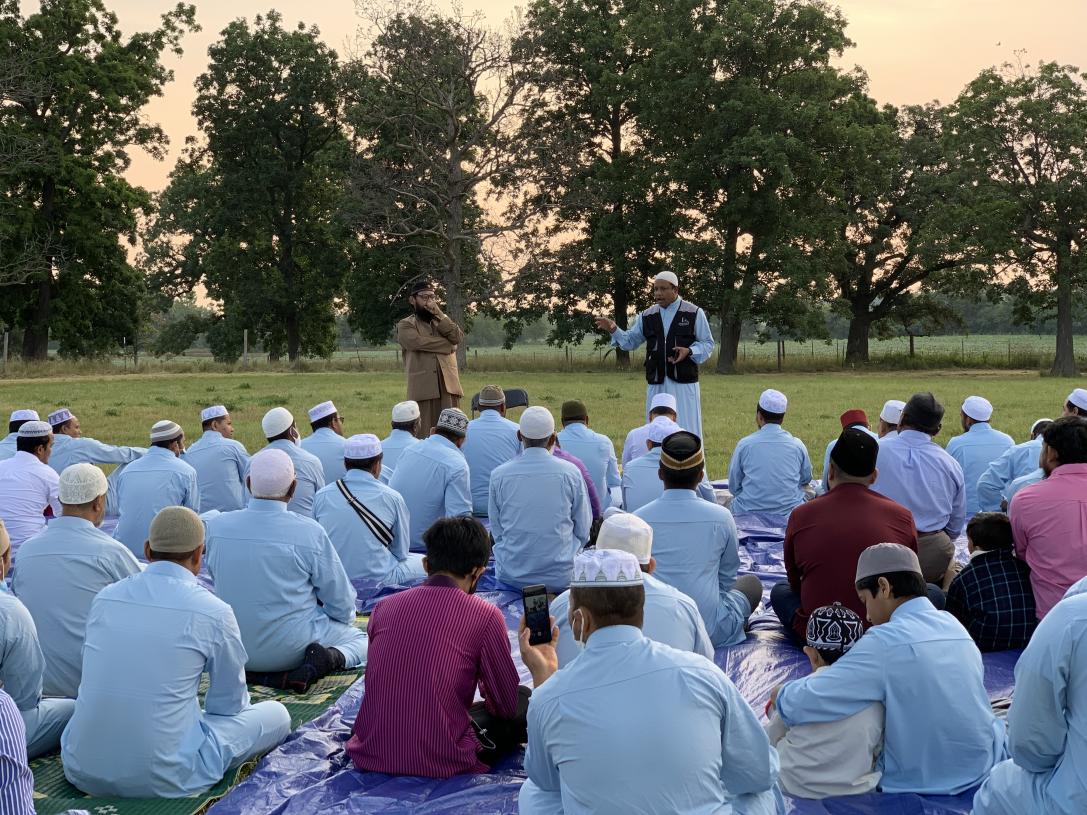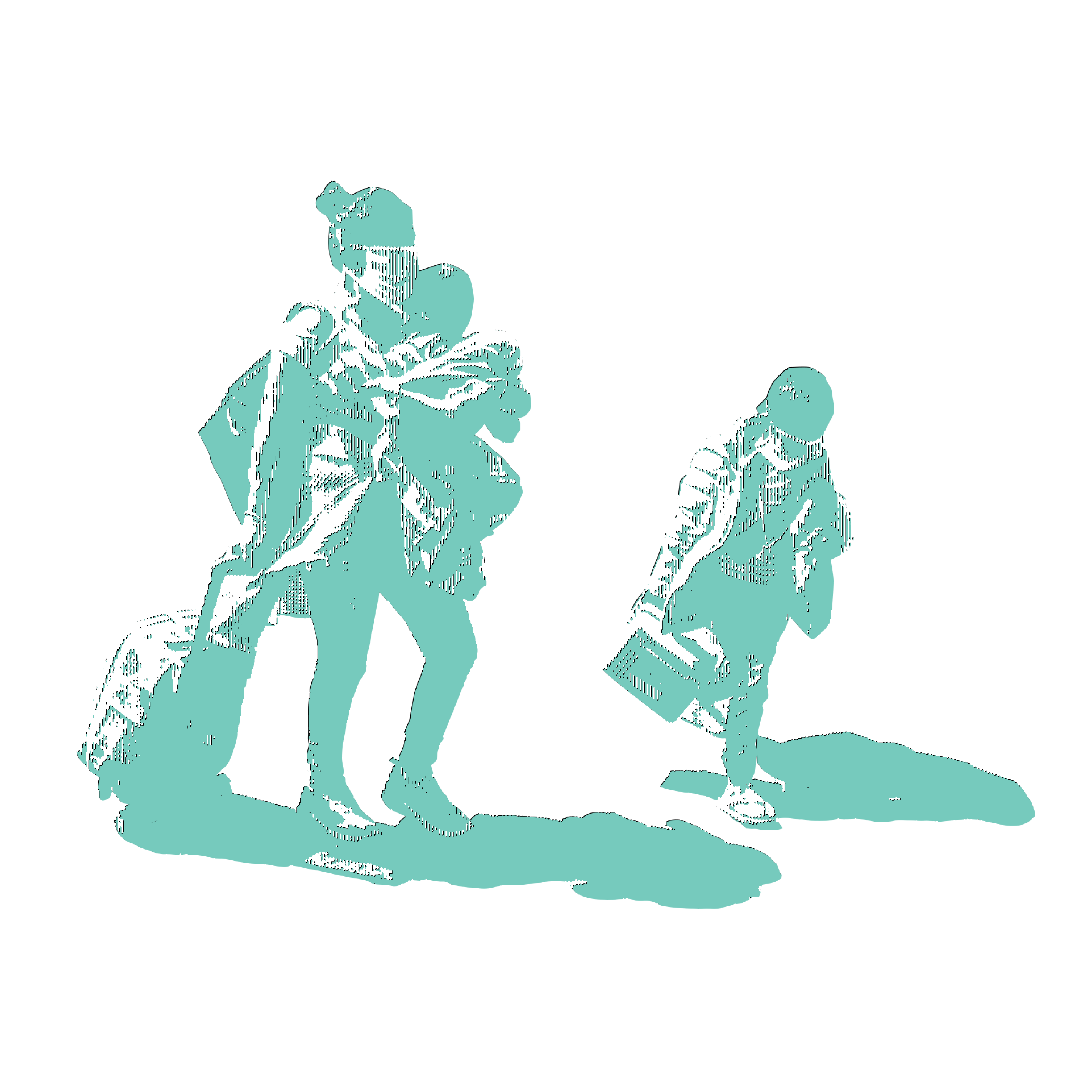This unit was created by Jessica Lopez, a high school school teacher in Gulfport, MS, as part of the 2021-2022 Pulitzer Center Teacher Fellowship program. It is designed for facilitation across approximately three weeks with 75-minute class periods on each day.
For more units created by Pulitzer Center Teacher Fellows in this cohort, click here.
Objectives:
By the end of the unit, the student will be able to…
- Cite specific details from the text that support how an author organizes a text.
- Discuss how an author develops a central idea over the course of a text.
- Analyze how an author intentionally unfolds a series of events
- Determine an author’s point of view in a text and analyze how an author uses rhetoric to advance the purpose or point of view.
- Identify the specific characteristics found in a narrative essay.
- Write a narrative essay or memoir from another person’s perspective.
Unit Overview:
This unit will focus on reviewing modes of writing, identifying specific components of a narrative essay, and practicing narrative writing in an untimed format. Students will analyze news stories, autobiographies and nonfiction texts focused on the experiences of individuals who have been forced to migrate throughout the world, and then practice the skills of storytelling and empathy-building by creating narrative essays that take the perspectives of the migrants whose stories they analyzed. Throughout the unit, students reflect on how narrative essays and underreported news stories can challenge bias and stereotypes. They also evaluate the way that writers can apply various writing techniques and structures to convey narratives that challenge “single stories” about groups of people and cultivate empathy.
NOTE: This unit will be taught after reviewing the different writing modes and will be part of a semester focusing on international voices. This unit is also written to be taught after students read the book Born a Crime by Trevor Noah, but it includes modifications for students who have not read that book.
Performance Task:
Students will research, brainstorm, write, and revise a narrative essay written from a cultural perspective that is different from their own. The essay should use details from the informative texts explored and researched in the unit. The essay should also demonstrate mastery of the narrative writing techniques explored throughout the unit. The following rubric provided for the Mississippi state writing assessments will be used to grade the essay: MAAP Writing Rubric
Fifteen-lesson unit plan for teachers, including pacing, texts and multimedia resources, guiding questions for group discussions, and performance task instructions and grading rubric for the unit.
Unit Resources:
| Texts | >Three Views on a Tragedy: Remembering Katrina by Kathy Lohr, Greg Allen, and John Burnett for NPR >OUR TSUNAMI: The Sun Herald's Pulitzer Award Winning Coverage of Hurricane Katrina >HURRICANE KATRINA – SURVIVOR’S STORY, FIRST PERSON by Sheila St. Etienne for Florida Courier >Chapter 18--Born a Crime by Trevor Noah or Excerpt: Trevor Noah’s “Born a Crime” - CBS News >Transcript: Danger of a Single Story by Chimamanda Ngozi Adichie >“South African Apartheid” by Mike Kubic for Commonlit article >Sample narrative “Return to July” from Engage NY >Notes on Grief by Chimamada Ngozi Adichie for The New Yorker >Behind the Story: Imran Mohammad Fazal Hoque on Rohingya People’s Struggles in U.S. by Imran Mohammad Fazal Hoque for Pulitzer Center >Musician Profile: Soyedul Amin by Sasha Ingber for Music in Exile >*Rohingya Diaspora in the U.S. - narratives by Imran Fazal Hoque on his experience and the experiences of other Rohyingya youth >"Writing Saved Me" by Imran Mohammad Fazal Hoque for the Pulitzer Center >United Nations High Commissioner for Refugees (UNHCR) - Refugee Statistics >UNHCR stories >Words Matter resource defining the differences between the terms refugee, migrant, internally displaced person (IDP), and asylum-seeker |
| Videos | >TEDTALK: The Danger of a Single Story by Chimamada Ngozi Adichie >What Are Underreported Stories? video from the Pulitzer Center |
| Teaching Resources | PLOT diagram |
| Optional Resources | Teacher-generated background information on Rohingya communities, which may include the following resources: >Newsela | Myanmar: Who are the Rohingya? >An educator from your school >“Who are the Rohingya and why are they fleeing?” by Angela Dewan for CNN >“Explainer: Who Are Myanmar's Rohingya?” for Voice of America >“Safe in School” by Jaime Joyce for Time for Kids |
Common Core Standards:
CCSS.ELA-LITERACY.RI.9-10.1: Cite strong and thorough textual evidence to support analysis of what the text says explicitly as well as inferences drawn from the text.
CCSS.ELA-LITERACY.RI.9-10.2: Determine a central idea of a text and analyze its development over the course of the text, including how it emerges and is shaped and refined by specific details; provide an objective summary of the text.
CCSS.ELA-LITERACY.RI.9-10.3: Analyze how the author unfolds an analysis or series of ideas or events, including the order in which the points are made, how they are introduced and developed, and the connections that are drawn between them.
CCSS.ELA-LITERACY.RI.9-10.4: Determine the meaning of words and phrases as they are used in a text, including figurative, connotative, and technical meanings; analyze the cumulative impact of specific word choices on meaning and tone (e.g., how the language of a court opinion differs from that of a newspaper).
CCSS.ELA-LITERACY.RI.9-10.5: Analyze in detail how an author's ideas or claims are developed and refined by particular sentences, paragraphs, or larger portions of a text (e.g., a section or chapter).
CCSS.ELA-LITERACY.RI.9-10.6: Determine an author's point of view or purpose in a text and analyze how an author uses rhetoric to advance that point of view or purpose.
CCSS.ELA-LITERACY.RI.9-10.7: Analyze various accounts of a subject told in different mediums (e.g., a person's life story in both print and multimedia), determining which details are emphasized in each account.
CCSS.ELA-LITERACY.RI.9-10.8: Delineate and evaluate the argument and specific claims in a text, assessing whether the reasoning is valid and the evidence is relevant and sufficient; identify false statements and fallacious reasoning.
CCSS.ELA-LITERACY.W.9-10.3.A: Engage and orient the reader by setting out a problem, situation, or observation, establishing one or multiple point(s) of view, and introducing a narrator and/or characters; create a smooth progression of experiences or events.
CCSS.ELA-LITERACY.W.9-10.3.B: Use narrative techniques, such as dialogue, pacing, description, reflection, and multiple plot lines, to develop experiences, events, and/or characters.
CCSS.ELA-LITERACY.W.9-10.3.C: Use a variety of techniques to sequence events so that they build on one another to create a coherent whole.
CCSS.ELA-LITERACY.W.9-10.3.D: Use precise words and phrases, telling details, and sensory language to convey a vivid picture of the experiences, events, setting, and/or characters.
CCSS.ELA-LITERACY.W.9-10.3.E: Provide a conclusion that follows from and reflects on what is experienced, observed, or resolved over the course of the narrative.
Students conclude their analysis of the writing techniques and structures used for narrative essays, and their exploration of underreported news stories about the experiences of individuals who have been forced to migrate, by creating narratives that reflect details from the reporting they explored throughout the unit. The following student examples from students at Gulfport High School in Gulfport, MS reflect how students documented details from underreported stories about the experiences of individuals who have been forced to migrate, and then used those details and various writing techniques to create original narrative essays inspired by the reporting they explored.
Sophia S.
"As I fought with the water, I thought about my family's future if we happened to get out of the jungle. If we happened to get out of the river. I was afraid, but I couldn’t let my family and my children see that."
Sophia S, student from gulfport, MS for their story "Rip Current"
Skylar B.
"There were all kinds of anxious people looking for a way out. But one of them was different. Her name was Vincenta. Unlike the other women, she wasn’t looking for a way out. She was welcoming others in."
Skylar B FROM GULFPORT, MS FOR THEIR STORY, "A New Escape"
Lauren N (exploring reporting on migration from Ukraine):
“What do you think about heading west?” I asked Ivan, unsure.
From where he stood next to me, I could see him thinking it over in his head. Slowly, he nodded and headed towards the front door."
Lauren N FROM GULFPORT, MS FOR THEIR STORY, "Finding Home"








